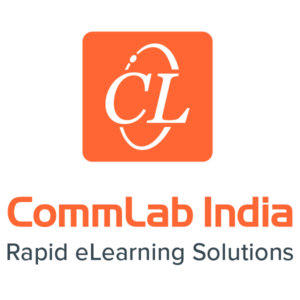ILT To VILT Transition
VILT, an acronym for Virtual Instructor-Led Training, is a unique learning delivery format that integrates the charm of ILT (Instructor-Led Training) with the power of eLearning technology. Based on the idea of synchronous learning, VILT is synonymous with being a highly engaging and efficient training method. Most VILT projects are ILT projects converted to meet new learning needs.
Now the question arises, can all ILT projects be converted into a VILT session? What are the points to evaluate? What kind of roles are involved? Let us go through these points in more detail.
Who Is Involved In A VILT Session?
A mix of multiple roles and teams join hands to build a VILT session from the start to the end. For instance:
- The Subject Matter Expert (SME) handles and supervises the courseware content.
- The Instructional Designer (ID) designs and develops the VILT program using the latest technologies.
- A training instructor facilitates and conducts the virtual training.
- A moderator supports the instructor with the help required to conduct the session, if any.
- Lastly and most importantly, an audience of learners participating in the training session.
What Are The Points To Consider When Converting From ILT To VILT?
When converting from an ILT session to a VILT session, these are the core elements that need to be focused on by the roles involved.
Check the content in terms of quantity—is it adequate or too much? Ensure the quality matches the standards of an online medium. Break down chunks of content and repurpose them accordingly.
Choose any extra add-ons you may want to add to your ILT courseware, design a plan of action and create support guides for the facilitator, moderator, engagement support documents, reference materials, checklists, and any similar format to support the VILT session. A mock webinar to get hands-on practice is also a good idea to include.
Align courseware content and materials to the tool, add gamification, enhance what can be executed, and ensure design scalability.
An effortless overall learning experience is what participants remember for a long time. When using technology, facilitators should try to incorporate and leverage all the benefits of their tools.
Plan the required engagement activities strategically so that they are easy to participate in, and explore the features of the tools you are using to understand the best possible way to execute your activities. Interesting options like polls, breakout rooms, annotations, and channel chats can be utilized to interact at different levels. Enable participants to summarize and share their learning in some form as a meaningful and noteworthy interaction.
-
Optimize Engagement Throughout
While a facilitator and Instructional Designer can put all their effort to create a best-in-class VILT program, if the learners are bleary, all the effort goes in vain. Online learning fatigue is real. Participants will need additional breaks as compared to an ILT session. That is precisely why, when articulating engagement activities for the session, facilitators must focus on encouraging engagement and schedule periodic breaks. Checking in with participants at different stages of the session also builds a sense of security and accessibility. Using the more straightforward options in technology tools, like reactions, questions, polls, etc., it becomes easy to drive quick involvement.
What Does The Process Of Converting From ILT To VILT Look Like?
A large part of the conversion process heavily deals with the content section. That said, a successfully converted session will include a bit of everything to get done. Ideally, we can categorize the process of converting ILT to VILT into 3 main phases across roles: planning, design, and development. Let’s look at what these individual phases comprise.
1. Planning
It involves a lot of brainstorming on the way forward. Once a plan is put in place, it becomes easy to carry out the following activities. Some of the steps in planning look like this: defining the scope of the entire project, assigning timelines to the selected scope, selecting the training materials from ILT, deciding the technology tools to be used, assigning facilitators and moderators, and tweaking learning objectives to match business goals.
2. Design
Review the ILT materials, include or discard information accordingly, design the content as required, fuse eLearning methodologies like blended learning or microlearning where possible, and explore what can be executed differently or what process from ILT can be simplified.
3. Development
The last development phase is where most of the planning and design come into action. Create or convert the required content formats, eLearning modules, and portions of VILT. Include the new materials and references as planned for all the respective roles.
In Conclusion
Implementing a VILT from scratch may look like a daunting task at first, but the results are truly rewarding for the organization. All the efforts contributed towards the seamless learning experience are worth it when the learning outcomes are optimal. VILT is here to stay and will change the game of ILT in the eLearning landscape.

